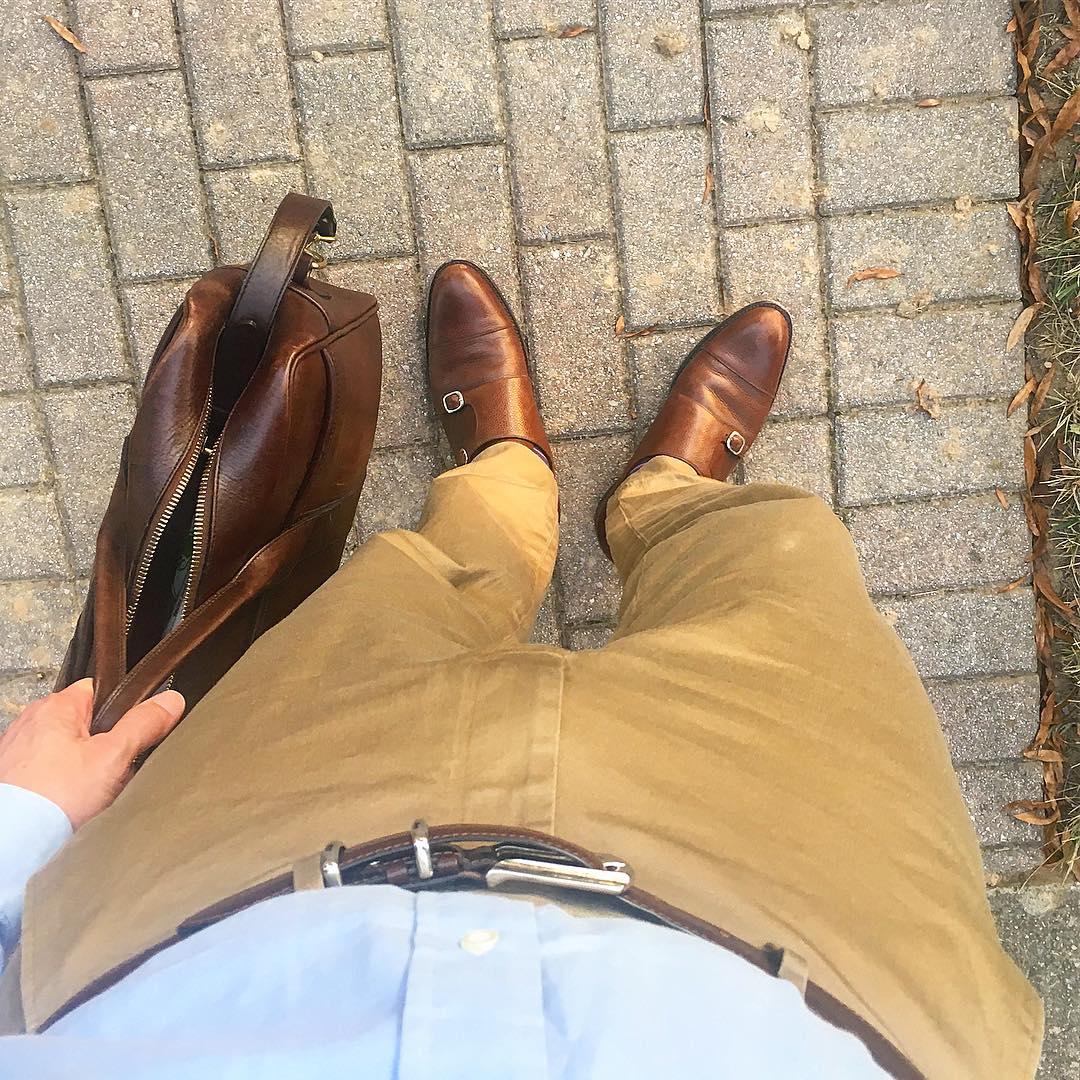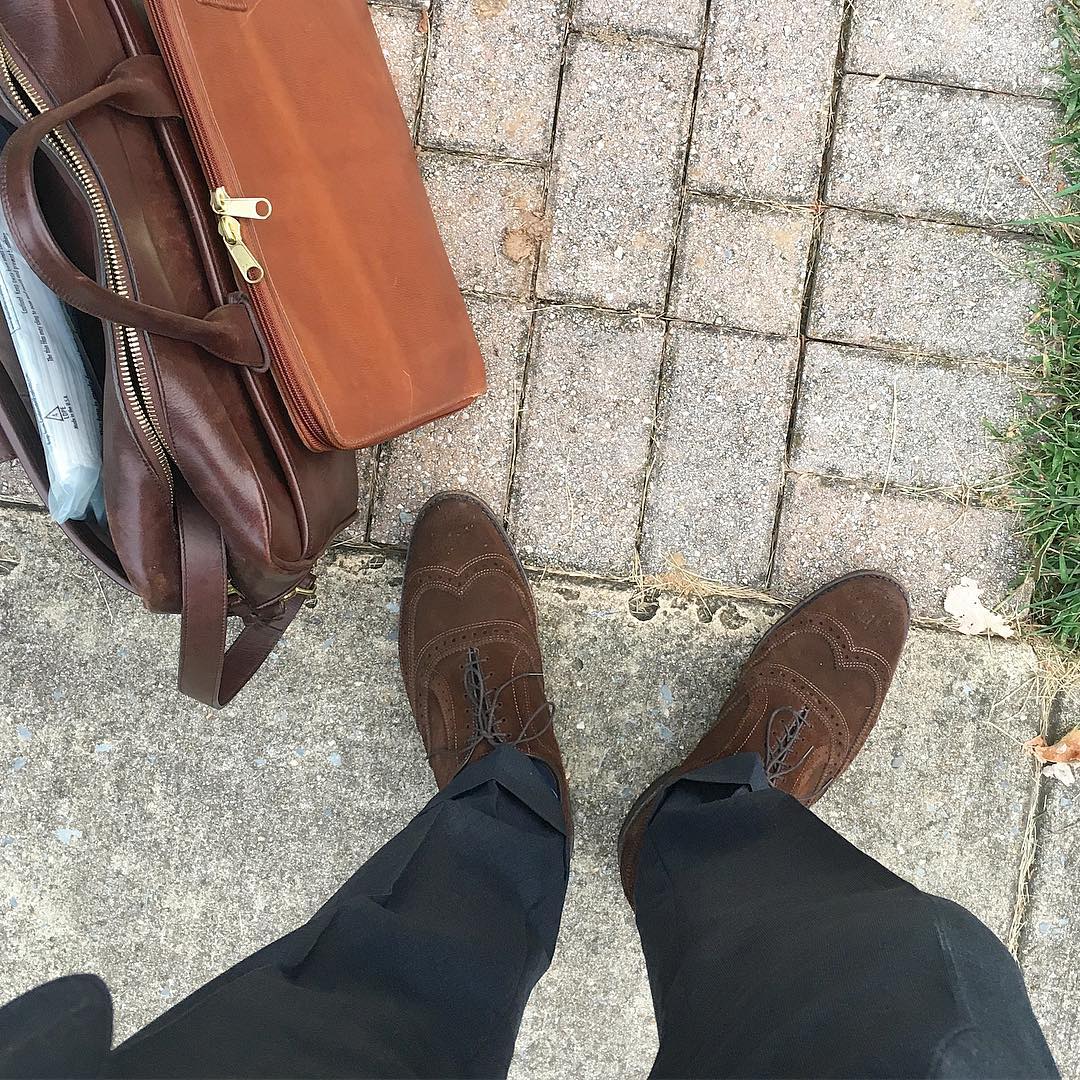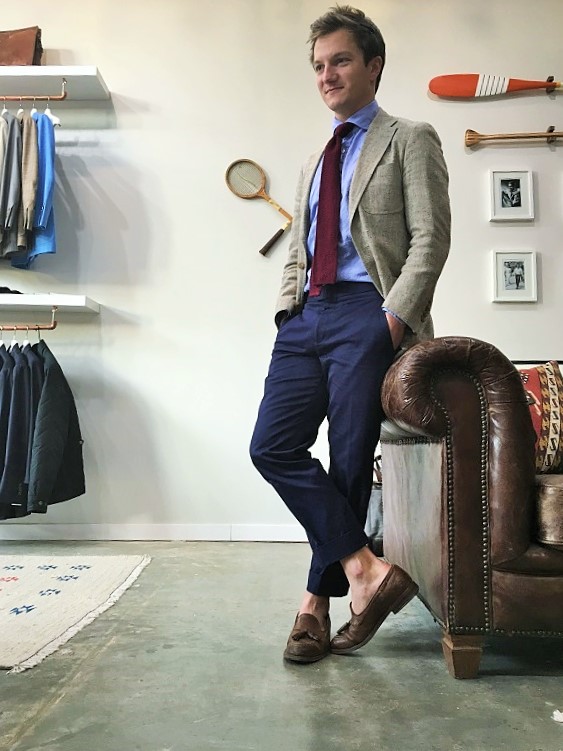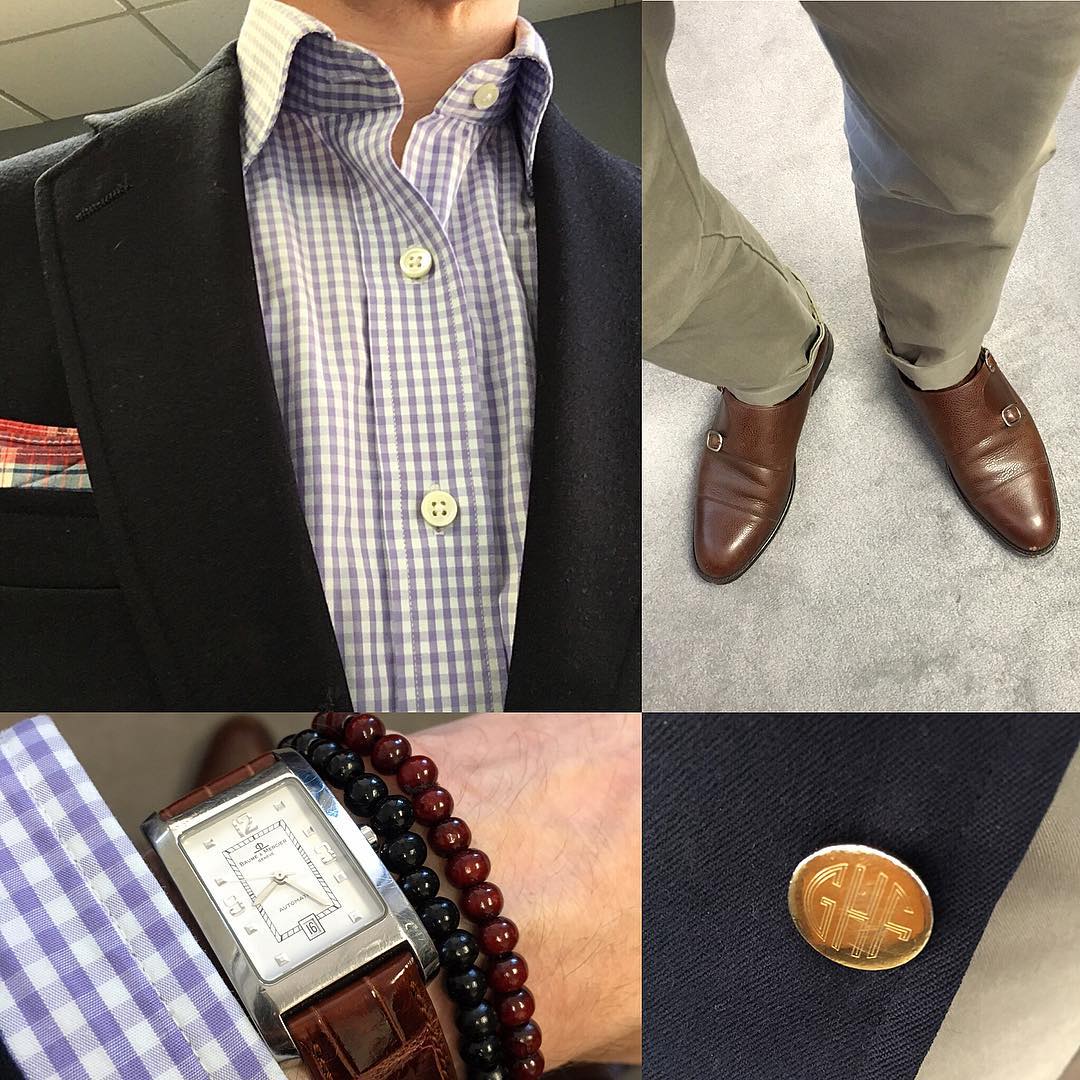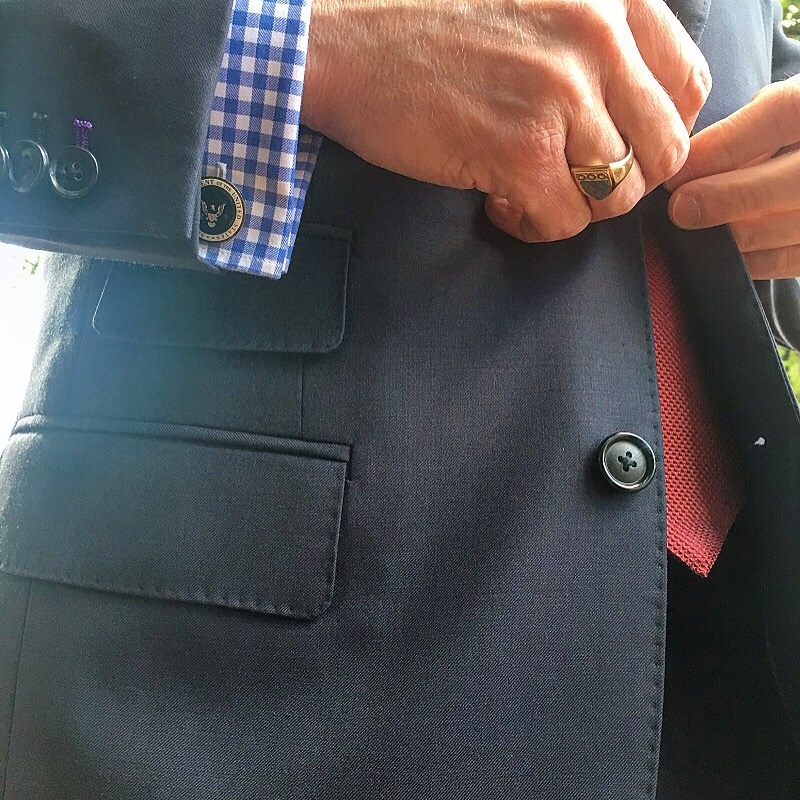 The question which often lingers in the back of many a man’s mind is this: does it matter what you wear when no one is looking?
The question which often lingers in the back of many a man’s mind is this: does it matter what you wear when no one is looking?
Whether one works in a casual office or from home, or simply operating out of other’s sight, many of us often struggle with what to wear. Too formal and we feel dressed up with nowhere to go. Too casual, and it can quickly descend into 24/7 workout wear – minus the exercise part.
One gentleman we know sees donning a suit as a specific obligation based on his audience for the day, otherwise, he is a shorts and ball cap kind of guy. His issue is that he doesn’t know how to “modulate” his work wardrobe to allow for other degrees of dress that let him express personal creativity and style while still looking casually polished.
For quite some time, men have viewed dressing well as a chore, something to avoid or something against which to fight. Frequently a latent fear of dandyism, it was also – and for many men still is – a misguided sense of self-righteousness; a feeling that you’re battling conformity, not buying into the “suit” thing – you know, being more “real.”
Of course, in picking up that mantle of sartorial pseudo-independence one simply conforms to a different model of conformity. Dressing like a perpetual college student in order to make a statement just locks you into another set of constraints to meet someone else’s definition of what being a nonconformist should look like. Our view has always been that personal style should blend the classics with modern fit and materials.
On some days a suit is indeed the right choice, while jeans, docksiders, and an a favorite oxford are appropriate on others. And a well-fitting navy blazer and some sharp, tailored khakis can pretty much get you through anything mildly dressy, short of a funeral or job interview at an investment bank.
Dressing for Yourself & Others
There is a world of style and personality between flip flops and a three piece suit. Rolling out of bed and shuffling down the hall to check the email is not the point here. However, when you step out of your house or log onto a video conference, there is a certain social contract into which we enter. What you have on now matters. Once you start interacting with other people out in public, you ought to show them the same level social and sartorial respect you yourself would expect in return.
 You should make an effort to dress well because you want to. That said, the first rule in dressing well is that you should always be comfortable and true to yourself.
You should make an effort to dress well because you want to. That said, the first rule in dressing well is that you should always be comfortable and true to yourself.
The second rule is that whether you like it or not, people judge you by how you dress, how you carry yourself and treat others, your social skills, how you speak, etc. Research has repeatedly shown that on average, it takes about eight seconds for an individual to decide what kind of person you are and it can take years to alter that initial perception. How you react to this universal truth is your choice. This means creating appropriate wardrobes that reflect your sense of self, but which are appropriate for the situation in which you find yourself.
Clothing is one our most obvious and influential social markers. How you choose to dress directly impacts what people think about you and, often what you think about yourself. Radical changes are not always necessary; getting new jeans in a darker wash that fit well or buying some new dress shirts that work with or without a tie take make a huge difference in how the world sees you.
Fit & Quality
If you choose or are obligated to wear a suit every day than take the time to learn what makes a great suit. Pay for quality, fit, and construction. It’s often more than you might prefer, but these things are the sartorial equivalent of a capital investment. And a word out blogs and influencers who constantly tout the unmatched virtues of bespoke and made-to-measure (MTM) suits. Don’t feel you are a lesser human being if you’re not wearing something hand crafted exclusively for your by a master tailor. We get access and deals you likely cannot. Often we get these garments for free or at a deeply discounted price.
Many off-the-rack (OTR) suits are perfectly good investments for those who need a few but are not being judged or evaluated on pedigree; sometimes you just need to wear a suit, end of story. There are also numerous MTM labels, online and through physical showrooms, that make great suits that will indeed fit you better than OTR. Regardless, you still need to take the time to find something that fits you well and looks good on you, not a fit model or blogger.
What does “fits well mean? Here are some handy pointers:
- For suit coats, sport jackets, or blazers, this means shoulders. A properly fitted shoulder is the foundation of a jacket that fits its wearer. After that, the overall proportions will vary by individual body type and preference. Learn what you like: fitted and trim or loose and flowing? Shorter or longer jacket skirts? One or two vents? Two or three buttons on a single-breasted jacket, or, do you prefer double-breasted? Do you prefer a more European armhole that sits tighter to the shoulder or something less fitted? Natural or structured shoulders?
- The same type of rule holds true for trousers. If the fit is wrong, nothing else really matters. Do you prefer pleats or flat fronted? Full break, moderate, or no break for your pant legs? Cuffs or plain hems? What kind of rise? Perhaps most importantly, you r trousers should always be comfortable whether sitting, standing, or moving.
- Dress shirts should flatter your physique, not envelope it with yards of fabric. Conversely, your shirt should not appear painted on, particularly if you’re not in the modelling profession. Buttons should not pull or strain, standing or seated. The neck should allow for two fingers to comfortably slip inside the collar when buttoned. Shoulder seams should sit on your shoulders as would your jacket’s , and sleeves generally should end at or just below your wrist bone. Take into account how much shirt cuff you want to show under your like your jacket’s sleeve – some should be visible.
Take time to try different fits and styles of clothing that flatter and are comfortable to and on you. If you wear business casual all the time, make the effort to expand your wardrobe. Instead of polos and khakis five days a week, add in some nice tailored pants and dressier casual shirts. Pick up a variety of sport coats and have them properly tailored. Making even these simple changes help to create a more flexible, natty, and comfortable wardrobe.
If you work from home and have client or co-worker meetings less often, keep abreast of general style trends. Update your wardrobe selectively and make sure to have someone else give you an honest assessment about color, fit, and style.
Pay attention to how you look when others aren’t around so that when they are, you always present your best self. It’s not fair, but it’s a truth: if you dress well, people often won’t notice at all. If you dress poorly, they may not notice anything else.

